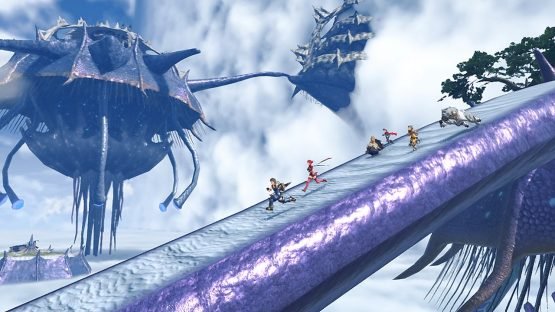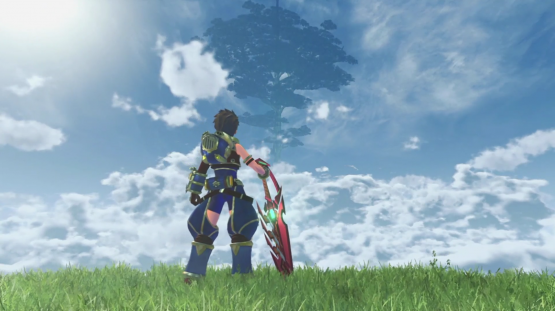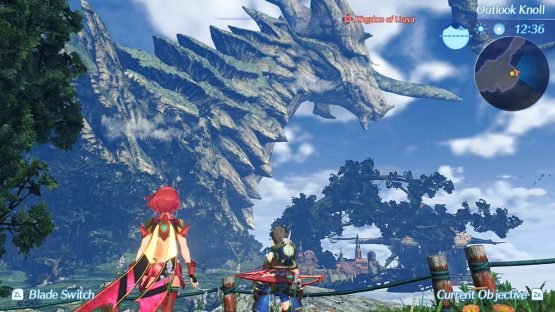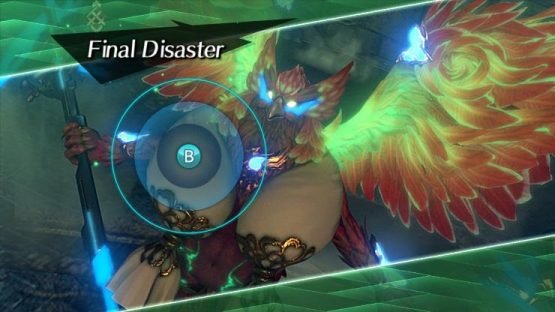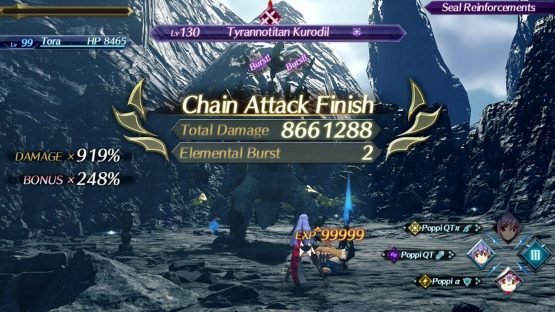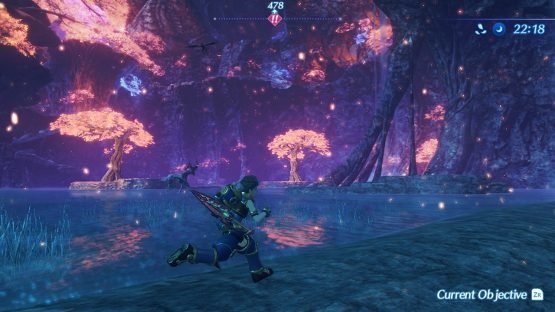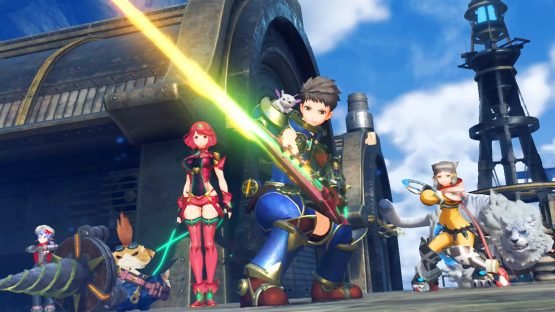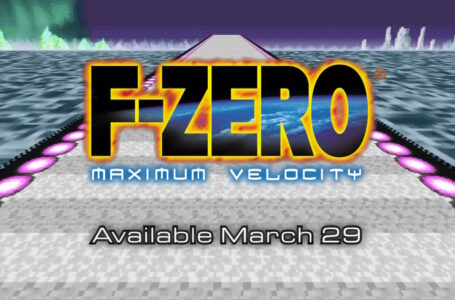Xenoblade Chronicles 2 Review – We Need to Talk About Xenoblade
In some ways, this third entry in the Xenoblade series (though, the Wii U’s X was more of a side thing) is the most traditional and most anime it’s been to date. But, the true majesty of the series is its unique approach the games take to world building and exploration. It’s here that Xenoblade Chronicles 2 is at the top of its class.
Your journey takes place in Alrest, some sort of huge cloud sea surrounding the “world tree”. Continents are huge titan creatures that circle the tree over and over. But, as time passes, these titans are all beginning to slowly die. Land is becoming scarce, and political tensions between the peoples of Alrest are high. Atop the world tree there’s a fabled “Elysium” — a land of plenty for all. Rex, a salvager who dives below the cloud sea to grab treasure from a civilisation long past, dreams of reaching Elysium and bringing an end to conflict. He gets his chance when he meets up with a special “blade” (more on that later) as part of a high-paying salvaging job. Quickly he’s thrust on a quest to reach Elysium that sees him travelling through all the titans, and unravelling the truth behind the strange world.
It’s a story that is filled with tropes you’ve seen before, and is way more anime than the preceding games with plenty of high octane super-powered fight cutscenes. But, even with some predictability, it’s also able to surprise in equal measure — whether that’s a twisty, turny in-depth plot, or in smaller character moments. The tale and the world it’s set in are delights, and you’ll want to explore every bit of it, and squeeze all you can out of the mysteries it holds.
Even with some predictability, it’s also able to surprise in equal measure.
As a series, Xenoblade Chronicles delights in giving you huge, alien environments to explore — packed with pick-ups, secrets to find, quests to complete, and monsters far more powerful than you can fight at your current level. Throughout the main story there will be points where you can run around the areas completely freely, and most of the joy comes from undertaking your own exploration, and constantly testing your limits against the environment. Hunting for glowing treasure with one eye fixed on a vicious Lv 81 tyrant who might come over to one hit KO you if you’re not careful, or following a twisting turning hidden cavern filled with promise.
Just as you’re free to find your own way in the huge maps of Xenoblade Chronicles 2, the game’s blade system is equally as unpredictable — though more out of your control. This is both very cool, and also kind of sucks. Putting my comparison gloves on, the left hand demands I compare the concept of blades to Digimon, the right hand demands Medabots, and my central hand is adamant that Fate’s servants are the answer. I slap my three hands away with my fourth hand, which thinks the best approach is probably to explain it myself, though it admits it might be a mixture of all three of those things.
I wanted to pursue the story behind each rare blade in their sidequests.
Basically, blades are your party’s weapons — each with their own design and personality. There are generic, cookie-cutter ones, but you’ll mainly want to use one of the tens of completely uniquely designed blades. They even have their own side-quests that are a joy to uncover and complete as you hunt for as many rare blades as possible. Most of the time you get them randomly by bonding with “cores”, which does mean you can just have terrible luck and not get many.
But it also means you might have an entirely different experiences to other players. Some rare blades are tied to specific events and quests, but ideally you should be able to get a bunch just by bonding with the cores you find on your journey. Some designs are better than others, but I wanted to pursue the story behind each rare blade in their sidequests, and that was really nice.
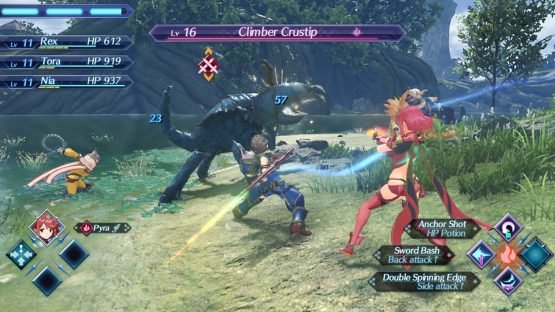
You can equip 3 blades at once. Well, you can by chapter 4. Xenoblade Chronicles 2 is actually very coy about opening up its combat system, which again is both a good and a bad thing. In fact, let’s take a quick break from explaining how combat and equipment works to address that real quick. Then, I’ll like work that into explaining the battle system a bit more. Seamless.
So, on one hand Xenoblade Chronicles 2 strips back JRPG conventions quite a bit. Armour and accessories, for instance, are just two gear slots. The MMO-style bar you’re used to from the rest of the series are now just three simple artes tied to 3 of the face buttons, with the fourth being a super move. But, on the other hand, Xenoblade Chronicles also has some incredibly complicated systems with a lot going on that it doesn’t explain super well or even dish out until a few hours in. There’s also no proper tutorial menu, so good luck with that if you hit “a” too quickly when the prompts come up.
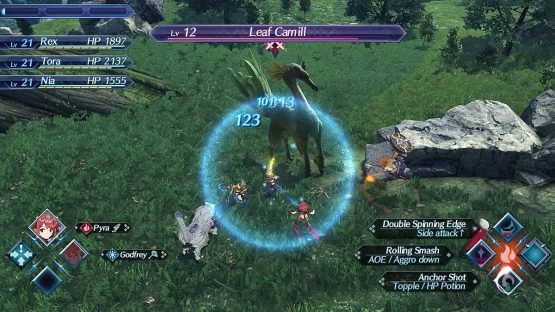
Battles seems simple, repetitive, and very slow at first. Your regular goons have a lot of health in this game. And if you don’t fully figure out the combat system bosses might take literal years. But when you work it out, the combat is so much fun! I’m chasing my tail here. What is the combat? OKAY. So, each blade is basically a weapon type (eg a sword) and an element (eg fire). Stand still, and your main pal is going to begin rattling off a 3 hit combo, which fills up each arte’s cooldown (basically your main person’s special moves, NOT your blade’s super move — these are not elemental).
NOW, when you use these artes, it’ll fill up the super move’s cooldown on the right. These go all the way from Lv 1 to Lv 4, with the fourth requiring you to simply wait rather than use artes, with your bond at a high enough level (basically fighting with your blade enough). The amount of damage these moves do, as well as the cooldown they fill, are linked to where in the three-hit combo you activate your move, so you need to be familiar with the combo strikes of the weapon types you’re using — and ideally hitting special moves out on the third hit. You can then chain from those moves by again hitting them at the appropriate time (I think this is an upgrade you need to grab from your skill tree).
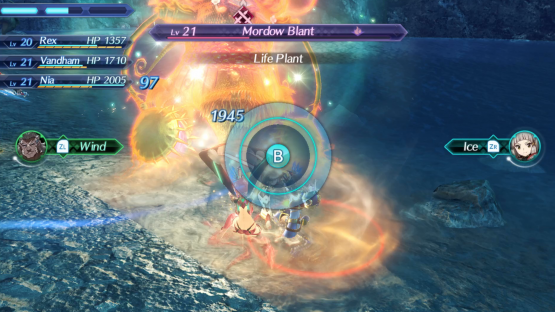
BREATHE. IT’S NOT OVER YET. THERE’S MORE TO THIS GORGEOUS SYSTEM.
Okay, so you hit the enemy with your fire super move. They now have a fire debuff on them, and the element chain combo tree can you begin. This pops up on your screen, as is essentially a branching path of three element moves that’ll result in a super strong move that will have a harsh debuff or some sort of effect on the enemy. Each stage of the combo must be that level of super move, so from Lv 1 to 3. For example, a Lv 1 fire move, to a Lv 2 water move, to a Lv 3 fire move, gives you Steam Explosion. Simple, right?
*That alarm noise from the beginning of “Bonfire”* THERE’S ACTUALLY MORE!
Okay, we’re almost done. Now you pulled off a combo, you will now have made an elemental orb start whizzing around the enemy. Finish off more combos with different elemental finishers and more orbs will start flying around it. Generally you want at least 4 of these going around an enemy when you want to bring out the big guns. Just hit the plus button to initiate a party chain attack when the party gauge is at level 3 (don’t get me started with this, essentially it goes up as you fight and each level can be spent to revive a fallen teammate, as well as do powerful things like this).
Each of the elemental orbs you put on the enemy will now appear on screen, and you can pop off a super with whichever blade you want from each party member in turn. Depending on elemental match-ups, these blade’s attacks will either gradually weaken some of the orbs, or burst them outright. As this goes on, your damage multiplier increases. With each burst orb, you get a chance for another round of attacks. Fill the burst metre by bursting orbs, and you can now do a full burst attack. This is the most powerful attack combination in the game, and thanks to the damage multiplier, will hit for massive damage. Congratulations, you probably won whatever fight that was.
You are correct. That entire explanation makes me sound like that asshole who showed up to the dinner party with a brand new board game none of you have heard about, and (with the plates cleared away and fresh glasses of wine poured) has now begun to rattle off the rule book wholesale. It’s no wonder they hold back on giving it all to you up front, but there must have been a better way than making the combat system feel incomplete for a large portion of the beginning of the game.
It makes it feel like you constantly have a few things cooking in serious battle encounters, and that you’re always aiming towards a goal.
On top of everything I explained, the “traditional” break/topple/launch/smash system is back from the other Xenoblade games. It’s still a cool system, but there’s just less options to have artes available to use when you only have access to 3 artes immediately, and it doesn’t mesh that well with the elemental combos that XC2’s combat system is truly built around.
Ultimately half this review is an explanation of the battle system. But it’s necessary to know it by the end of the game if you want to not have a terrible time with the boss fights and stronger enemies. And it’s poorly explained in game. But what’s important is that when you get it, it’s super fun. It makes it feel like you constantly have a few things cooking in serious battle encounters, and that you’re always aiming towards a goal. Hitting with a full burst attack will almost always knock the enemy for six.
Xenoblade Chronicles 2 sets a tremendously high bar for the genre.
Xenoblade Chronicles 2 is a phenomenal JRPG, even though it does indeed have its fair share of issues. But the most exciting things about the game remains one of its strongest selling points: it feels like a huge, spanning console JRPG, but you can take it on the go wherever you want.
JRPGs are massive time sinks, with this one easily taking 80+ hours, but demanding many more to see all the wonders it has in store. As the first Switch exclusive JRPG Xenoblade Chronicles 2 sets a tremendously high bar for the genre, and shows just how great the console can be for the genre.



